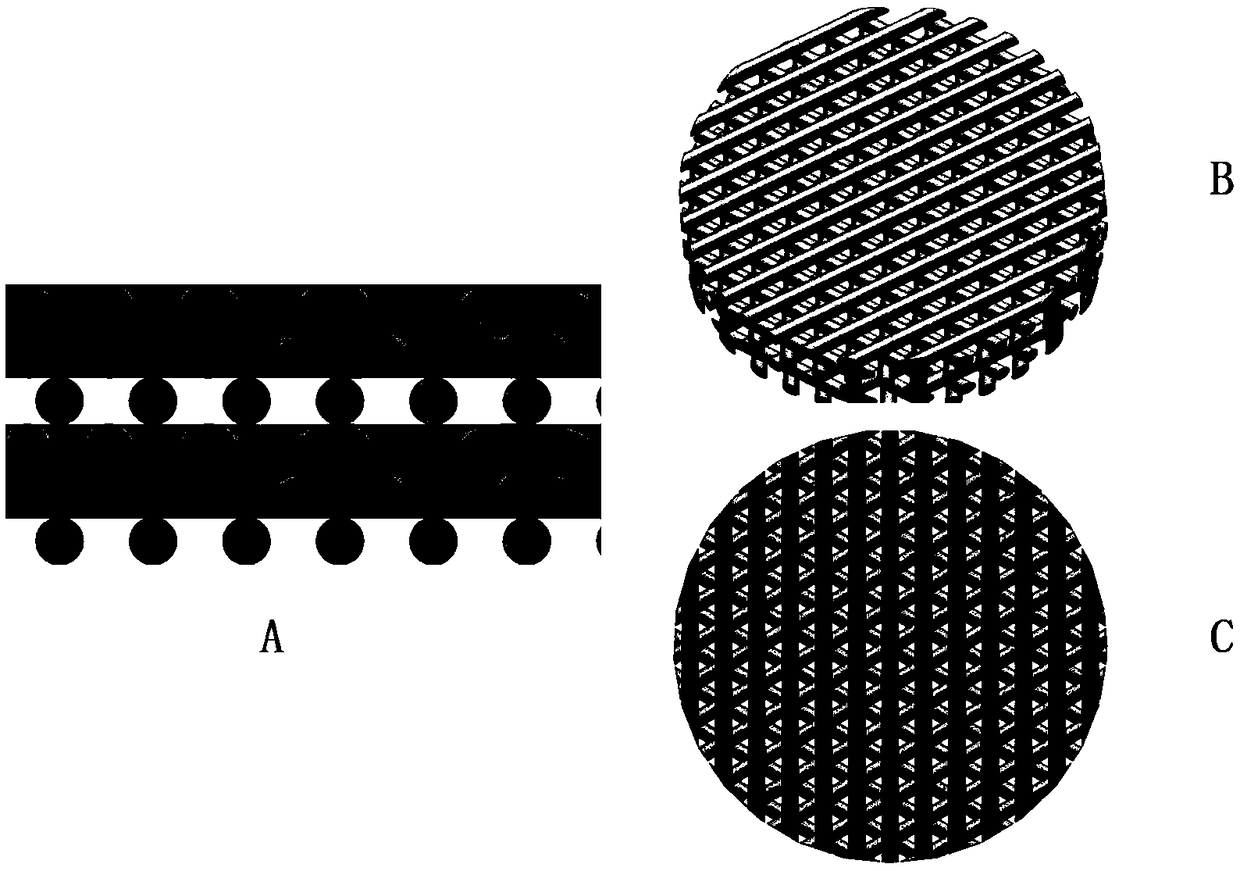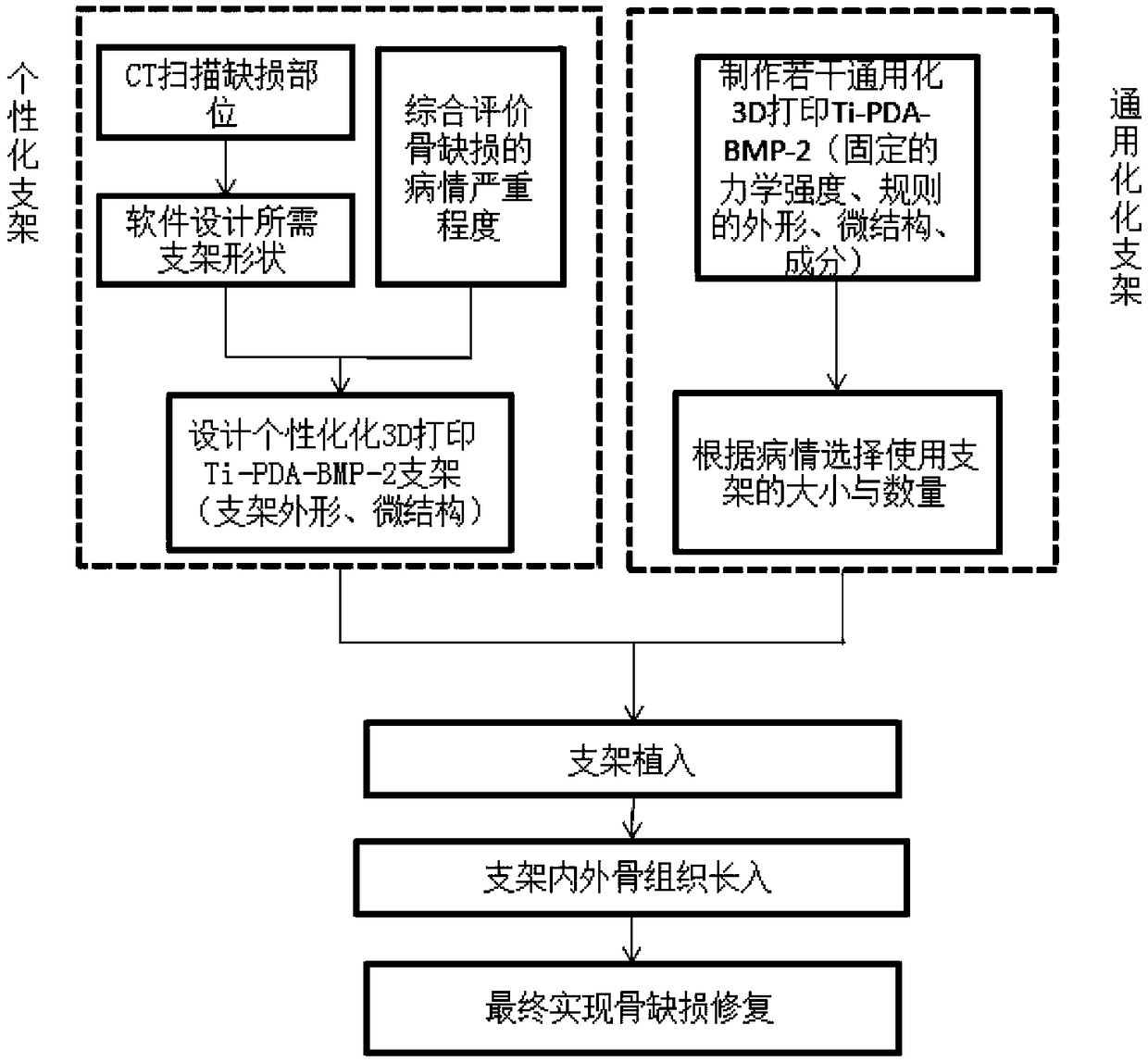3D printed Ti-PDA-BMP-2 bone defect repair tissue engineering scaffold and preparation method thereof
A tissue engineering scaffold, BMP-2 technology, applied in tissue regeneration, additive processing, medical science and other directions, can solve the problems of unguaranteed biosafety, high price, tumorigenicity, etc., to improve the carrying efficiency, improve The effect of hydrophilicity and biocompatibility
- Summary
- Abstract
- Description
- Claims
- Application Information
AI Technical Summary
Problems solved by technology
Method used
Image
Examples
Embodiment 1
[0037] 1. Preparation of 3D printed Ti scaffolds
[0038] The Ti6Al4V powder is sintered by laser to form a shaped fiber bundle, and the 3D printed Ti scaffold is obtained by stacking and splicing the fiber bundle at 0-90° or 0-60-120°, such as Image 6 shown.
[0039] 2. Preparation of 3D printed Ti-PDA scaffold
[0040] After the stent structure is constructed by 3D printing, the surface is modified using PDA. The specific steps include:
[0041] 1) preparation concentration is the hydrochloric acid (HCL) solution of 0.5mol / L;
[0042] 2) Weigh 0.61g Tris and add it into 500ml water to dissolve, after stirring, add the prepared 0.5mol / L HCL solution drop by drop to adjust to pH=8.5, and prepare Tris-HCL solution for later use;
[0043] 3) Dopamine (DA) was dissolved in the above 150ml Tris-HCL solution, stirred and dissolved, and prepared as 2% DA-Tris-HCL solution;
[0044] 4) Add the 3D printed Ti bracket to the above solution, stir in the dark and unsealed state, 800-...
PUM
| Property | Measurement | Unit |
|---|---|---|
| Concentration | aaaaa | aaaaa |
Abstract
Description
Claims
Application Information
 Login to View More
Login to View More - R&D
- Intellectual Property
- Life Sciences
- Materials
- Tech Scout
- Unparalleled Data Quality
- Higher Quality Content
- 60% Fewer Hallucinations
Browse by: Latest US Patents, China's latest patents, Technical Efficacy Thesaurus, Application Domain, Technology Topic, Popular Technical Reports.
© 2025 PatSnap. All rights reserved.Legal|Privacy policy|Modern Slavery Act Transparency Statement|Sitemap|About US| Contact US: help@patsnap.com



